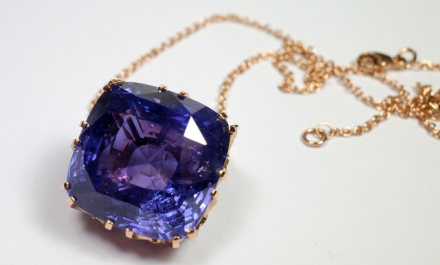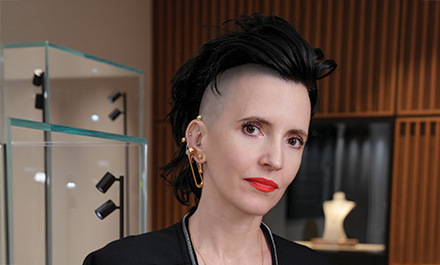Inter-Pacific Holdings Ltd is growing a ‘jardin’ in its Biron hydrothermal emeralds, opening up a world of possibilities in jewellery design and retail with more natural-looking lab-grown emeralds.
This article first appeared in the GEMSWORLD 2023.
Inter-Pacific Holdings Ltd is pushing the envelope on innovation with its new, more natural-looking lab-grown emeralds that display a “jardin” appearance. Launching in the second half of 2023, the new Biron hydrothermal emeralds appear to have a “jardin,” which is commonly used to describe the profusion of inclusions inside natural emeralds. The stones will mainly range from 2 carats to 5 carats, with limited production of sizes up to 10 carats.
According to Louis Lo, director of Inter-Pacific Holdings Ltd, these were developed in response to clients’ request for more natural-looking stones since current lab-grown emeralds in the market always seemed too clean and glass-like. “Our objective is to offer the market lab-grown emeralds that look as natural as possible in both colour and appearance. We have achieved the vivid colour saturation of Colombian emeralds and can now supply stones with ‘jardin’ for the high-end market that appreciates this feature,” he explained.
The Biron technique of creating lab-grown emeralds using the hydrothermal growth process was developed in Australia in the 1980s and 1990s. The process has continually been refined and is now conducted in Hong Kong. Biron hydrothermal emeralds have the same gemmological composition as a natural emerald but typically have little or no inclusions due to its production process. Inter-Pacific’s new stones with a “jardin” appearance thus represent a significant technological breakthrough.
A report by Bonita Kwok, head of Laboratory at Gubelin Gem Lab Ltd, affirmed that Inter-Pacific’s new Biron hydrothermal emeralds seemed to have “jardins” while maintaining most of the characteristics of Biron lab-grown stones and could clearly be detected as man-made. “Surprisingly, two new Biron hydrothermal synthetic emeralds are not perfectly clean but display a ‘jardin’ appearance,” the report said.
In the 1980s, Biron commercially developed and manufactured hydrothermal synthetic emeralds weighing over 100 carats. These were prized for their high transparency and for being free of eye-visible inclusions, whereas the new materials have a more natural-looking appearance.
The Gubelin Gem Lab team found that the two samples’ water absorption and chlorine-related absorption were different from traditional hydrothermal synthetic emeralds.
Chemical analysis done by energy-dispersive X-ray fluorescence (ED-XRF) also revealed that both specimens showed very low concentrations of alkali elements, manganese (Mn), iron (Fe), zinc (Zn), gallium (Ga), rubidium (Rb) and caesium (Cs), while indicating high vanadium concentrations ranging from 9,000 to 13,000 ppm.
According to the report, the two stones’ microscopic features are comparable to traditional Biron synthetic emeralds. These include “nail-head-like inclusions, two-phase inclusions in ‘fingerprint’ pattern and as wispy ‘veils,’ unknown white particles and unknown low-relief transparent colourless inclusions.” The stones also had irregular, poorly developed v-shaped growth structure.
"In summary, the studied new Biron hydrothermal synthetic emeralds have a different trace element pattern compared to its traditional type, namely vanadium-doped rather than iron and chromium. That leads to the different UV-Vis (ultraviolet-visible) spectra. Infrared spectra can easily distinguish its hydrothermal synthetic nature, even though its ‘jardin’ appearance might resemble a natural emerald,” Kwok stated in the report.
Business prospects
Inter-Pacific’s new Biron hydrothermal emeralds unleash manifold design and business opportunities for the jewellery manufacturing and retail sectors.
“Our target clients are jewellers that manufacture higher-end jewellery with superior, natural-looking lab-grown gemstones. We expect the market to welcome our new stones with open arms since they closely resemble mined emeralds but come at a fraction of the cost and do not require any oiling or treatment,” Lo said.
The new stones are priced at a premium over usual versions due to their more complex production process.
Inter-Pacific’s new release is also timely, given rising market acceptance of lab-grown goods. Lo noted that consumers increasingly consider the environmental credentials of their purchases. Younger generations also shy away from spending large sums of money on jewellery with expensive natural gems. The soaring popularity and availability of lab-grown diamonds in recent years likewise help debunk misconceptions about man-made goods.
“These market shifts indicate that lab-grown gemstones will truly take off in 2023, and our new Biron hydrothermal emerald will lead the charge,” Lo said.








